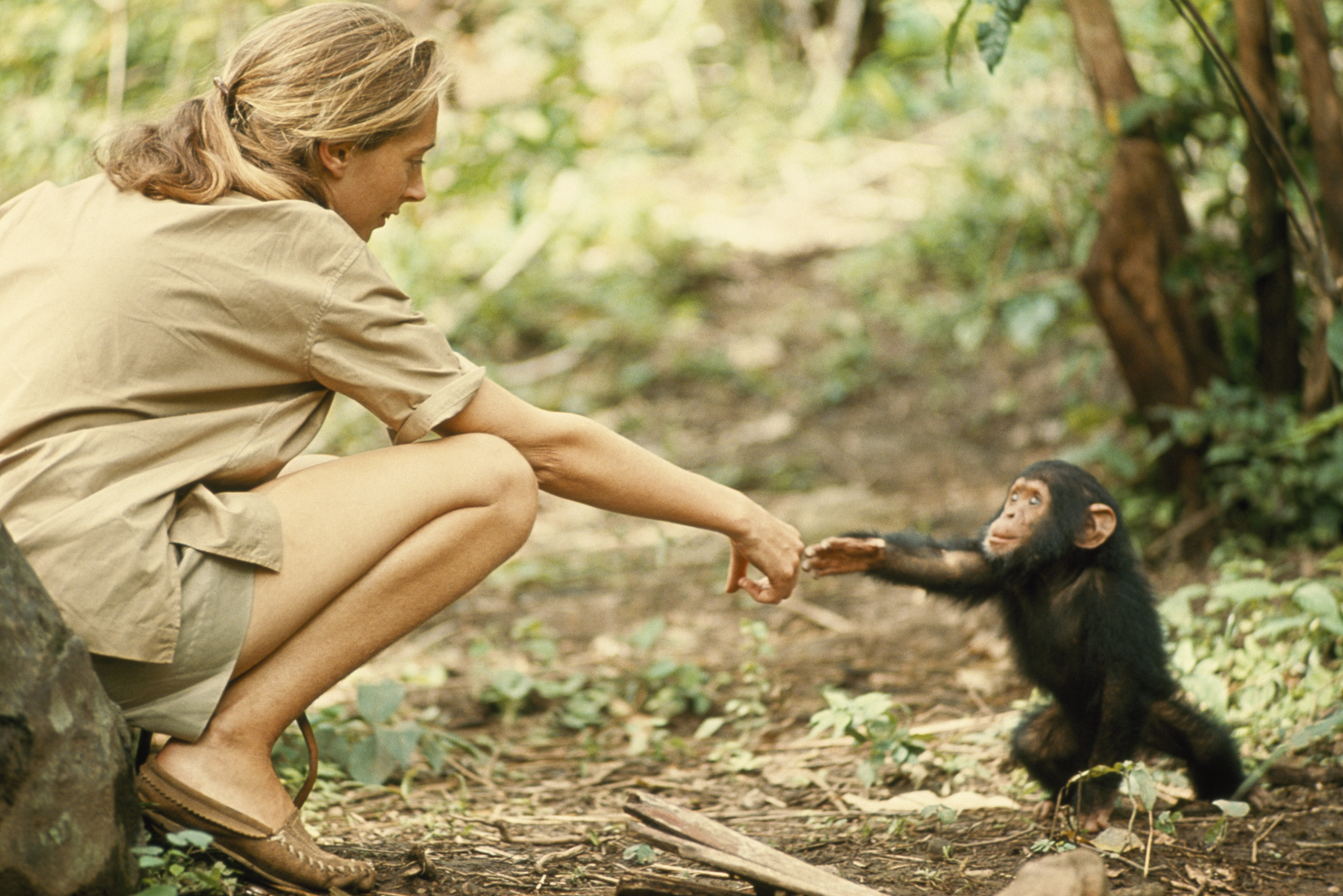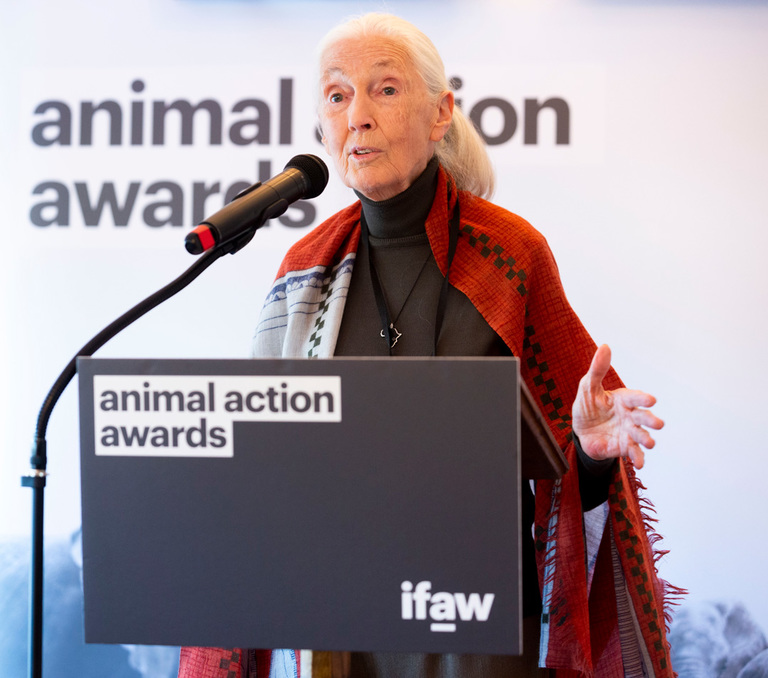Thought for 1m 10s
Jane Goodall: Pioneer and Conservation Icon

Jane Goodall: A Life in Pictures – The New York Times
Did you know that a young woman with no formal scientific training revolutionized our understanding of primates and reshaped conservation efforts worldwide? Jane Goodall, the legendary ethologist, dedicated over six decades to studying chimpanzees, revealing their human-like behaviors and advocating for their protection. Tragically, she passed away on October 1, 2025, at the age of 91 due to natural causes while on a speaking tour in California, leaving an indelible mark on science and environmentalism.
Her journey from a curious child in England to a global icon is a story of passion, perseverance, and profound impact. In this article, we delve into Jane Goodall‘s life, her groundbreaking discoveries, and her enduring legacy. Whether you’re a student, an animal lover, or someone interested in conservation, there’s much to learn from her extraordinary path.
Table of Contents
- Early Life and Influences
- Path to Gombe: Beginning of a Legendary Career
- Groundbreaking Discoveries in Chimpanzee Behavior
- Founding the Jane Goodall Institute
- Conservation Efforts and Global Impact
- Awards and Recognitions
- Personal Life and Philosophy
- Recent Activities and Passing
- Q&A: Common Questions About Jane Goodall
- Summary: Reflecting on an Extraordinary Life
Early Life and Influences
![With a heavy heart, we say goodbye to our beloved friend to humanity and the animal kingdom.💔🙏🌎 Rest In Power Dr. Jane Goodall! 🕊️ 1934—2025 ••• [Slide 1] #RickFraustoFineArt Jane Goodall Portrait,](https://serpapi.com/images/4e54e99d314182835b0325cfe26ec29e.jpeg)
With a heavy heart, we say goodbye to our beloved friend to humanity and the animal kingdom.💔🙏🌎 Rest In Power Dr. Jane Goodall! 🕊️ 1934—2025 ••• [Slide 1] #RickFraustoFineArt Jane Goodall Portrait,
Jane Goodall was born Valerie Jane Morris-Goodall on April 3, 1934, in London, England. From a young age, she exhibited a deep fascination with animals, inspired by stories like Tarzan and Doctor Dolittle. Her childhood dream was to live among wild animals in Africa and write about them.
Growing up during World War II, Jane Goodall faced challenges but found solace in nature. At age one, she received a stuffed chimpanzee named Jubilee from her father, which sparked her lifelong love for primates. She often recalls hiding earthworms under her pillow and observing birds for hours.
- Key Childhood Influences:
- Books on wildlife and adventure.
- Family support, especially from her mother, Vanne, who encouraged her curiosity.
- Early experiences with pets and farm animals in Bournemouth, where the family moved.
By 18, Jane Goodall left school without pursuing higher education immediately. She worked as a secretary and in film production, saving money for her African adventure. This period honed her determination and resourcefulness, traits that would define her career.
Her passion led her to Kenya in 1957, where she met renowned paleoanthropologist Louis Leakey. Impressed by her knowledge and enthusiasm, Leakey hired her as a secretary and later mentored her, setting the stage for her iconic research.
Path to Gombe: Beginning of a Legendary Career
In 1960, at age 26, Jane Goodall arrived at Gombe Stream Game Reserve (now Gombe Stream National Park) in Tanzania. With no university degree, she relied on patience and observation, accompanied initially by her mother due to local regulations.
Setting up camp was arduous. Jane Goodall faced dense forests, wild animals, and isolation. For months, chimpanzees fled at her approach, but her persistence paid off.
- Milestones in Early Research:
- Establishing trust with the chimpanzee community.
- Naming individuals (e.g., David Greybeard, Flo) instead of numbering them, humanizing her subjects.
- Documenting daily behaviors through meticulous notes.
By 1962, Leakey arranged for Jane Goodall to study at the University of Cambridge, where she earned a Ph.D. in ethology in 1965—remarkably, without a bachelor’s degree. This made her one of eight people ever to achieve this.
Her methods challenged traditional science, emphasizing empathy over detachment. This approach not only yielded rich data but also inspired future generations of field researchers.
Groundbreaking Discoveries in Chimpanzee Behavior

education.nationalgeographic.org
Jane Goodall
Jane Goodall‘s observations at Gombe shattered myths about chimpanzees. Previously seen as peaceful vegetarians, she revealed their complex, sometimes violent societies.
One pivotal discovery came in 1960 when she saw David Greybeard using a grass stem to “fish” for termites—proving tool use wasn’t unique to humans. This finding, published in National Geographic, redefined humanity’s place in nature.
- Major Discoveries:
- Tool Making and Use: Chimps modify tools, showing intelligence.
- Omnivorous Diet: They hunt and eat meat, including small mammals.
- Social Structures: Hierarchies, alliances, and warfare between groups.
- Emotional Lives: Joy, grief, and family bonds, like Flo’s nurturing of her offspring.
In the 1970s, Jane Goodall documented the “Four-Year War” among chimp groups, highlighting parallels to human conflict. These insights taught us about evolution, empathy, and the thin line between humans and animals.
Her work extended beyond chimps, influencing studies on animal sentience and ethics in research.
Founding the Jane Goodall Institute
By the mid-1970s, Jane Goodall shifted from pure research to advocacy. Alarmed by habitat loss and poaching, she founded the Jane Goodall Institute (JGI) in 1977.
The JGI focuses on chimpanzee conservation, community development, and education. It operates in multiple countries, protecting habitats and supporting local economies.
- Key Programs:
- Tachimp: Community-centered conservation in Tanzania.
- Research continuation at Gombe.
- Global campaigns against wildlife trafficking.
Jane Goodall also launched Roots & Shoots in 1991, a youth program empowering young people to tackle environmental issues. With chapters in over 60 countries, it teaches leadership and sustainability.
Through JGI, she demonstrated that conservation succeeds when communities benefit, a lesson still relevant today.
Conservation Efforts and Global Impact

Jane Goodall Chimp Personalities Studied in Gombe Stream National Park | National Geographic
Jane Goodall‘s advocacy extended far beyond Gombe. She traveled extensively, speaking on climate change, biodiversity loss, and animal welfare.
She addressed deforestation in Africa, promoting sustainable agriculture. Her efforts helped establish protected areas and influenced policies on captive chimps.
- Global Initiatives:
- UN Messenger of Peace since 2002.
- Campaigns for ethical treatment in labs and zoos.
- Books like “The Chimpanzees of Gombe” (1986) educating millions.
In the 21st century, Jane Goodall tackled broader issues like pandemics and habitat destruction, linking them to human actions. Her message: Every individual can make a difference.
Her impact is seen in increased awareness and funding for primate conservation worldwide.
Awards and Recognitions
Throughout her career, Jane Goodall received numerous accolades, reflecting her contributions to science and conservation.
- Notable Awards:
- Dame Commander of the British Empire (2003).
- Templeton Prize (2021) for bridging science and spirituality.
- Stephen Hawking Medal (2022) for science communication.
- U.S. Presidential Medal of Freedom (2025), awarded shortly before her passing.
These honors underscore her role as a bridge between science, policy, and public engagement.
The 2017 documentary “Jane” brought her story to new audiences, earning critical acclaim.
Personal Life and Philosophy
Jane Goodall married twice: first to photographer Hugo van Lawick (1964-1974), with whom she had son Hugo Eric Louis (“Grub”), and then to Derek Bryceson (1975-1980), a Tanzanian official.
She remained single after Bryceson’s death, focusing on work. Jane Goodall‘s philosophy emphasized hope, compassion, and action. She carried a stuffed monkey, Mr. H, as a symbol of comfort.
- Core Beliefs:
- Animals have emotions and rights.
- Education empowers change.
- Optimism in the face of environmental crises.
Her vegetarianism and advocacy for sustainable living embodied her values.
Recent Activities and Passing

Statement on the passing of Dr. Jane Goodall
Even in her 90s, Jane Goodall traveled 300 days a year, speaking at events like New York Climate Week 2025. She received the Presidential Medal of Freedom in January 2025.
On October 1, 2025, she passed away in Los Angeles from natural causes during a U.S. tour. Tributes poured in from world leaders, scientists, and fans.
Her last Instagram post highlighted hope for the planet, proving her enduring optimism.
Q&A: Common Questions About Jane Goodall
Q: What was Jane Goodall’s most famous discovery? A: Her observation of chimpanzees making and using tools, challenging the notion that tool use defines humanity.
Q: How did Jane Goodall start her career? A: Through mentorship from Louis Leakey, who sent her to Gombe without formal training.
Q: What is Roots & Shoots? A: A youth program founded by Jane Goodall in 1991 to inspire young people in environmental action.
Q: Did Jane Goodall have children? A: Yes, one son, Hugo Eric Louis van Lawick, born in 1967.
Q: What caused Jane Goodall’s death? A: Natural causes at age 91, while on a speaking tour in California.
Q: How can I continue her legacy? A: Join Roots & Shoots, support JGI, or adopt sustainable habits like reducing plastic use.
Summary: Reflecting on an Extraordinary Life
Jane Goodall‘s life was a blend of scientific rigor, compassionate advocacy, and unyielding hope. From her humble beginnings to global stardom, she taught us that observation leads to understanding, and understanding to action.
Her legacy lives on through protected habitats, inspired youth, and a shifted worldview on animals. As we face environmental challenges, Jane Goodall‘s message resonates: “Only if we understand, will we care. Only if we care, will we help. Only if we help, shall all be save
External Links for In-Depth Reading on Jane Goodall
The article you referenced is an original compilation based on recent events and her life story. For primary sources and detailed obituaries following her passing on October 1, 2025, here are key external links from reputable outlets:
- The New York Times: Jane Goodall, Revered Chimpanzee Expert and Conservationist, Dies at 91 A comprehensive obituary covering her groundbreaking research, personal life, and global impact.
- Los Angeles Times: Jane Goodall, trailblazing naturalist whose intimate observations of chimpanzees transformed our understanding of humankind, has died Focuses on her field observations and influence on primatology and women’s roles in science.
- TODAY: Jane Goodall, Iconic Zoologist and Conservationist, Dies at Age 91 From Natural Causes Highlights her advocacy, the Jane Goodall Institute, and reflections from contemporaries.
- ABC7 Los Angeles: Dr. Jane Goodall dies just before scheduled Pasadena event Local coverage of the circumstances surrounding her death during a speaking tour.
- NBC News: Jane Goodall, renowned chimpanzee researcher and animal advocate, dies at 91 Emphasizes her scientific revolutions and tireless environmental efforts.
These articles provide firsthand reporting and additional context to complement the overview in the piece. If you’d like links to her official institute or specific books, let me know!

